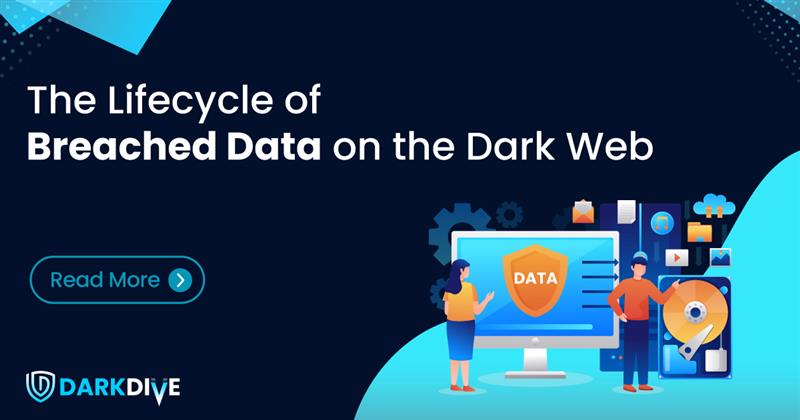
Cyberattacks don’t stop at the breach. In fact, for many threat actors, that’s just the beginning. Once inside your systems via a stolen login, a misconfigured database, or a leaked vendor credential—cybercriminals don’t always launch attacks immediately. They repurpose what they find. Sell it. Share it. Build on it. And if you’re not monitoring the underground markets where these activities unfold, you’re missing the bigger picture.
This is what truly makes the dark web dangerous: it doesn’t just store stolen data; it gives it legs, buyers, context, and a way back into your network.
From Breach to Marketplace
Let’s say a password gets leaked just once. That single credential might show up in a dark web dump within hours, bundled with other details from the same breach. But it doesn’t stop there. Other actors phishing kit developers, access brokers, and ransomware groups watch those dumps closely.
They’ll cross-reference that credential against other platforms. They’ll create phishing campaigns that look legitimate because they’re using your brand. They’ll test and refine malware that targets your systems more accurately because they’ve got internal documents from a previous breach.
And it all begins with a single lapse.
What’s Really Being Sold—and Why It Matters
You might assume the dark web only traffics in usernames and passwords. But the reality is far broader and more damaging.
Here’s a glimpse of what gets traded and how it fuels larger threats:
- Access credentials for everything from HR portals to production servers. These often get resold multiple times.
- Source code & internal docs are used to find software flaws or impersonate brands.
- VPN & RDP access is critical for ransomware crews and initial access brokers.
- Zero-day exploits are developed or sold among private actors before they’re public.
- Data on your vendors or clients is a way to pivot and compromise more targets downstream.
It’s not just about what’s stolen—it’s about how that data moves, mutates, and becomes a weapon in someone else’s hands.
Why This Cycle Keeps Repeating
Cybercrime is now a distributed economy. Just like in any legitimate market, specialization makes things efficient. One actor finds the weak spot. Another packages it into something useful. A third sells it to the highest bidder.
This makes the impact of a breach far larger than what’s seen at the moment of compromise. You’re not just facing one actor, you’re facing a network of them. And each player in that network squeezes every drop of value from the data they get.
That’s why even seemingly low-value information—like an old login or a draft proposal—can set off a chain of compromises months later.
Where DarkDive Fits In
At DarkDive, we don’t just wait for breaches to make headlines. Our job is to watch the markets where your data might be circulating before the impact reaches you.
We monitor credential dumps, access-for-sale forums, chatter about exploits, and any sign that your business—or your partners—is being targeted. Our platform alerts you when data tied to your domain, employees, or systems starts making the rounds, giving you the chance to act before it escalates.
Because by the time a threat hits your firewall, it’s already late in the game.
Conclusion
The dark web isn’t just a vault of stolen data—it’s a supply chain. A credential leak isn’t the end of an incident; it’s the start of a wider, more dangerous process that can spiral out of control. To truly defend your business, you need to understand this cycle, monitor where your data goes, and intervene before the damage spreads.
That’s the only way to stay ahead of a threat that never stops evolving.
